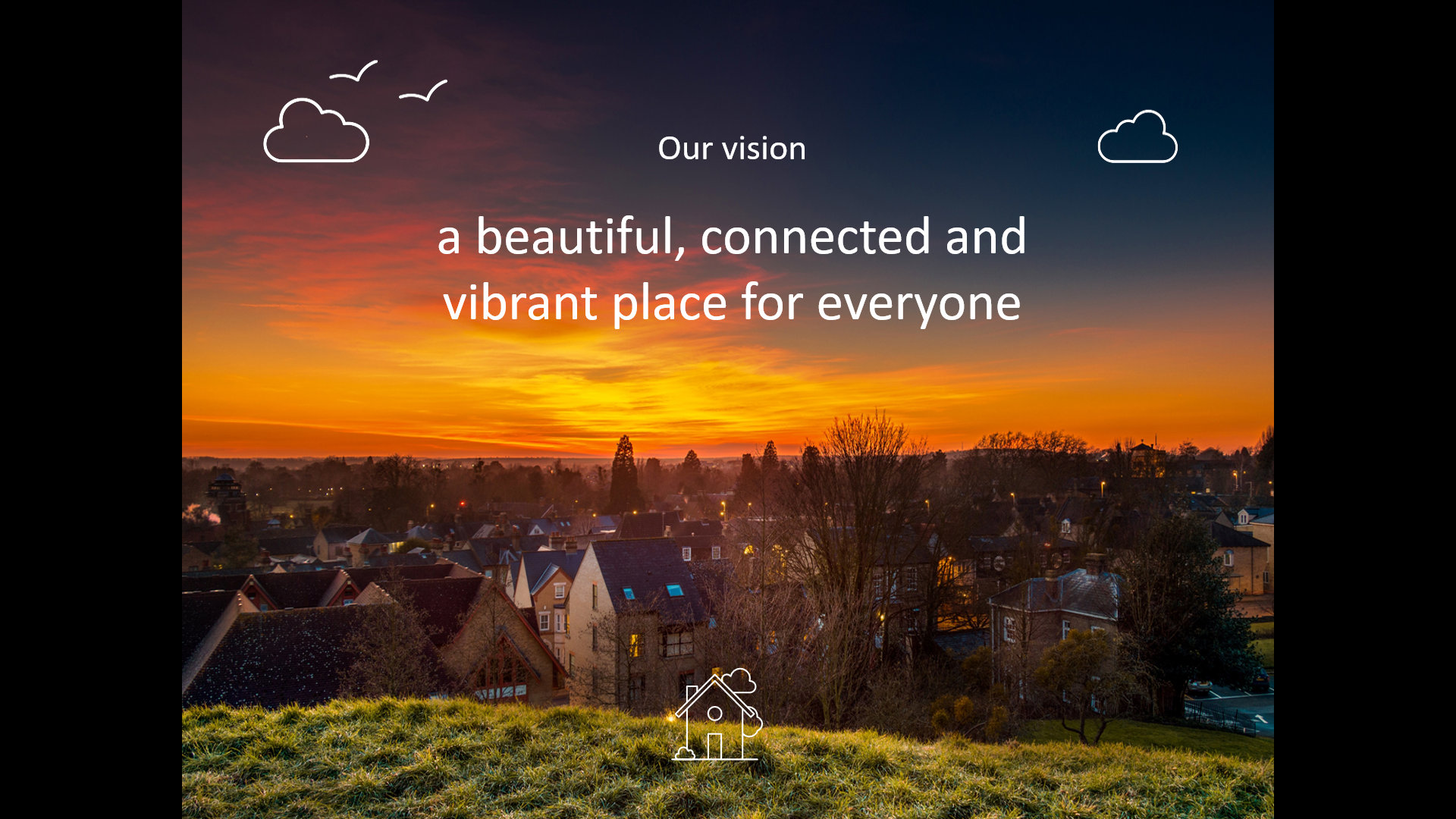If you’re reading this blog, you’re probably interested in place-making. Maybe you work for a government body, housebuilder or housing provider. You could be involved in a significant new development, regeneration or an infrastructure project.
This work is often framed in the context of ‘delivery’ or hitting targets and numbers. While important in itself, it often misses the bigger picture around why this work matters. It matters because it makes great places happen. Done well, this transforms areas and improves people’s lives.
Throughout the disruption caused by COVID-19, good agile communication is helping organisations make places happen across the country. Every project we support is different, and there’s no template to share that can be applied to a project. But here are five things we advocate through our work to make places happen that keep our clients moving forward at this challenging time.
#1 Understand your audiences
Any communication must be based on insight if it’s to succeed. That means doing your research to get a feel for local communities before moving into ‘delivery’ mode. As a team that’s worked across 160 local authority areas spanning from Cornwall to Aberdeen, we have plenty of insights on communities and stakeholders to shape our work. This is combined with research using local economic data, information on people’s media habits and listening to what people are saying online about a project or topic. Commissioning research to obtain a snapshot of views on an issue – as we did with YouGov on the planning White Paper recently – can be useful too.
This insight gives partners confidence that our plans are well thought through. And it helps our clients connect with communities in a meaningful and inclusive way.
In one project we’re supporting in the South West, we found that most local residents are aged over 55 and own their home. Our engagement will use Facebook (where residents are active) and local media, alongside messages of reassurance and optimism for the future of the area, where residents will hope their children will live and find decent work.
On an engagement in Yorkshire, we’ve used focus groups of young people, faith groups, business representatives and voluntary organisations. This helped us understand the priorities of a diverse group of residents and develop meaningful conversations with them.
#2 Engage authentically
We’ve seen increased public expectation over recent years for organisations and their representatives to be genuine and authentic when communicating with them.
Lockdown has highlighted this vividly, with amazing examples of community activism and people coming together to support each other.
The development industry faces two challenges in this area. The first relates to how its messages connect with people. The second relates to trust people have in the messenger. Matching words with action is a must if these challenges are to be addressed.
Speak – and act – human
For engagement to happen on a human level, messages must be clear, grounded in reality and emotionally literate. They need to convey more than ‘have your say…’ if there’s a serious ambition to reach beyond the usual suspects. Storytelling is a central part of this. People are moved by stories that reflect their experiences. Stories about ‘people like them’, an area’s history or communities doing great things for each other to inspire people and bring them together.
These stories should be backed by action. Words without action are slogans and do little to build trust with communities.
I sense this is becoming clear in the growing number of discussions within the industry about social value. Some organisations, including those we work with, really get the importance of this and are embedding it in their plans. Those who take the time to do this well stand a better chance of success in cities like Bristol, which take this seriously. Those who spin it will get found out and left behind.
#3 Invest in outreach
I’ve written before about the importance of letting people know about your plans. Research (see #1) helps to shape this outreach. Although every project is different, we find a blend of online and offline approaches works best.
In one recent project, we produced consultation materials in Urdu and Punjabi to increase local participation, whilst having a digitally led approach to support wider engagement. We also linked with community networks to establish project ‘champions’ to connect with people.
On a garden community development, we’ve combined a direct mail campaign with online webinars, which have replaced face-to-face events during lockdown. Most people who have worked from home use Zoom regularly, if the stats are anything to go by. Our engagement team has held webinars on our dedicated platform attended by more than 100 local residents, capturing more than 130 public questions during the sessions.

As part of an integrated, insight-driven approach, this is a smart, measurable way to keep people engaged in a conversation.
Taking time to reach out to those people in the first place helps create those connections.
#4 Build relationships
The milestone-led nature of the planning process can create a tick-box approach to community engagement which overlooks the importance of relationships. Where development projects are long-term, lasting relationships will benefit an organisation after Gannt charts are archived.
The most successful projects I’ve worked on in recent years have strong relationships at their core. Community leaders and clients know each other and have built mutual understanding over a number of years in some cases. Those relationships don’t start and end when milestones are completed.
These relationships are not just with your traditional statutory stakeholders either. They can include local influencers – businesses, community groups, bloggers, Facebook page admins – who can help to build support over time. A bit of research (see #1, again) should identify these people.
#5 Listen and respond
Good communications is two-way. That means organisations need to listen to what people are saying and respond to it.
Many organisations provide an email address or online form for people to leave feedback. We’re taking this further by using online tools to capture people’s feedback about an area – what they like and don’t like – at an early stage. On one project we’re supporting in the West of England, we’ve had more than 100 comments made on a map of an area on a website we’ve built. These are being used by partners to shape a study about the area’s future. This is supported with digital outreach, media relations and conversations with local stakeholders. It is playing a central part in building the connections and trust that the project needs to move forward. It also provides the insight (see #1, again) that will shape future ideas.
Content that connects
This brings us back to the point this post started on; the importance of understanding your audience. This blog isn’t intended for everyone. It’s written for people who work on making places happen every day, as we do. You’re probably here because you’ve seen our posts on LinkedIn or signed up to our newsletter. I’m really pleased you’ve taken the time to read it and hope you found it useful.
You can also check out our tips for creating a comms strategy and download a template.
Or you can get in touch if you’d like to chat.
Header photo by Nadine Shaabana on Unsplash


